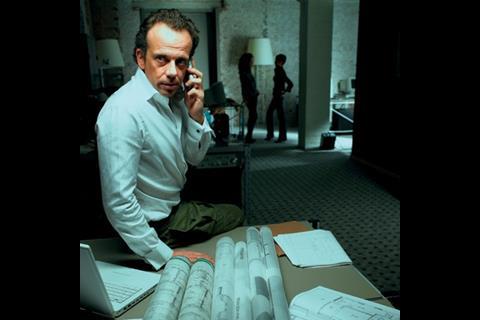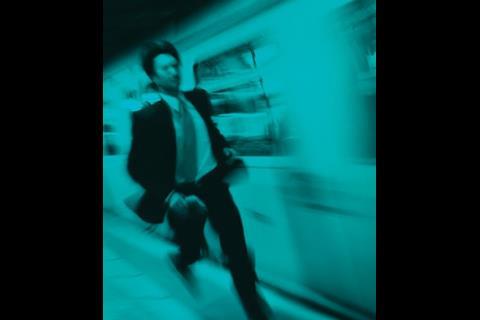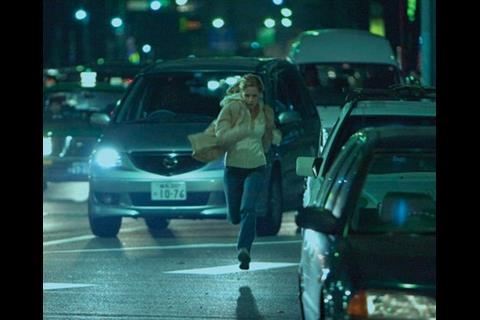Dan Stewart had one day to find out if architects can help protect the country from terrorist attack. Fortunately, he spent it at one of the new government training sessions on designing out terror âŠ
It may be hard to think of architects, those sofa-hugging imbibers of the skinny latte, as fearless agents of counter-terrorism, but the Home Office is determined to thrust them into the front line of the countryâs defence using nothing but their Apple Macs. It has teamed up with the RIBA to run a series of anti-terrorism training sessions for architects, designers and planners.
So what goes on at these events? And what do architects think about being called to fight in the âwar on terrorâ? I went to one of the first sessions to find out.
The courses are a response to an announcement last November by Admiral Lord West, the security minister, calling on architects to put counter-terrorism measures into major new developments. The one-day session is based on Project Argus, a terrorism simulation exercise run by the National Counter Terrorist Security Office (NaCTSO), the body that works with the Security Service to reduce the impact of terrorism in the UK. Used to train police and security guards, it is billed as allowing delegates to âexperienceâ a terrorist attack. They then discuss how design could mitigate the effects of attacks.
The convenor, Carl Whiteley-Jones, welcomes us as we file into the room. He is s police officer on secondment to NaCTSO. Most of the 80 or so delegates are regional architects and planners. There are also some university lecturers and engineers. I am sat next to an in-house architect from the Foreign and Commonwealth Office. He has helped design embassies and other politically sensitive buildings. âI imagine this is bread and butter to you,â I say. He shrugs. âIt is something weâre made aware of, but itâs good to talk about what youâre dealing with in sessions like this.â
Weâve been told very little about what the day will consist of. I think they want it to be a surprise. This may be putting some people on edge. Just as Iâm getting out my notepad, one of the delegates is suddenly standing over me. âIf you print my or my companyâs name in your magazine, Iâll have our lawyers onto you faster than you can blink.â I slowly put my notepad away. The speaker is an in-house architect for a Large Retail Developer.
On with the day. It will be broken up into a series of films and informal break-out discussions, where we will do some problem-solving. But first, we are shown an introductory film highlighting the threat of terrorism in the UK. A stern voiceover accompanies shots of an actor wandering through a shopping centre. âYou have the skills and the knowledge not only to help in terrorist attacks,â it intones, âbut to prevent them.â On screen, the actor rudely bumps into someone. The voiceover continues: âBut maybe you havenât got the sense to see that.â
Next comes the simulation itself. I am expecting masked actors to run in with packs of fake dynamite strapped to their chests. But the âattackâ is actually a fairly sedate affair. There isnât even a video. Instead we listen to a tape of a reconstruction of what might happen if Enterprise Square, a fictional public space, were to come under attack. A voice describes what can be seen in a dry monotone. âItâs lunchtime ⊠A warm and sunny day in half-term ⊠restaurants and cafes are full ⊠A large crowd has formed around a childrenâs entertainer ⊠A man enters the square with a rucksack. He starts shouting, and raising his hands to the sky. People turn to look at him. Something is not right.â Itâs actually quite sobering.
The sound of an explosion booms through the speakers. âA blast. People are thrown through the air. A cloud of acrid-smelling smoke surrounds you ⊠there is a silence, a strange and unusual sound, before a growing sound of screaming and crying. You see bodies lying on the ground. A woman next to you doesnât move. Looking down, you realise her legs are gone.â
In the narrative, two bombs go off, one in the terroristâs rucksack and one in a lorry as it crashes through the doors of the squareâs main building. After the recording ends, a short video is shown. Itâs a blurry, mock news report showing a fictional character announcing his intention to sue the architects of Enterprise Square. âThe perpetrators of this atrocity isolated the weakness of the design behind that square. Those who gave us Enterprise Square had every opportunity to minimise the risk, but they did not do it,â he shouts.
This raises eyebrows in the session, and with good reason, according to Rupert Choat, construction partner at CMS Cameron McKenna. Speaking to me a day after the training session, he says proving negligence would be nearly impossible. âThe test would be to prove that no reasonably competent architect would design it in the same way. I suspect it would be difficult to get a case like that off the ground, and even more difficult to win it.â
Back in the session, each table is given a plan of âEnterprise Squareâ, and told about its buildings, access points, landscape architecture and surroundings. We are asked to discuss how we could mitigate the risks of terrorism. âDonât invade other peopleâs countries,â mutters Large Retail Developer man.
âThere are no physical barriers preventing the lorry driving into the square,â says âSteveâ, another architect who craves anonymity. âAlso, I donât think you should have parked cars under government offices.â
Someone else suggests the bus lanes to the west of the site could be monitored by security. The fabric of the building could be better protected, and shatterproof glass used on the facade. I tentatively suggest it might not be a good idea to have residential blocks alongside a sensitive government office. âYeah, but thatâs the problem with mixed-use developmentsâ says Oldroyd.
âI just donât see what can be done about a maniac with a bomb in his rucksack,â sighs LRD man.
People said sustainability would be too expensive but thereâs a real appetite for that now. We predict the same thing will happen with counter-terrorism.
Joni Tyler, Riba
âSecurity,â says Paul Laycock, a university lecturer from Birmingham university. âHave them searching people in and out. I visited Israel and they search everyoneâs bag everywhere you go.â
âYouâre really suggesting searching everyone?â
âIn Israel Iâd get searched every day.â
âIf someone walks in with a hijab on, what are you going to do?â asks Steve.
Laycock shrugs. âI wouldnât like to see that court case,â says LRD man.
We are shown more videos. They include a message from Sunand Prasad, the RIBA president, advocating the role of architects in thwarting terrorist attacks. We are shown an unidentified masterplan, which we are told is where a significant terrorist attack took place. How would we protect this? Our team recommends security monitoring of a bus lane leading to the central building. It turns out the masterplan is for Glasgow airport, and that is exactly how terrorists managed to drive their jeep into the buildingâs entrance in August last year (see below).
âWe got a phone call after the Glasgow attack, saying âtheyâve only gone and used the bus lane,ââ Whiteley-Jones tells us. âAs if that was somehow enough to deter people. These people arenât going to be put off by a no-entry sign.â
We talk about how the choice of materials can help. Whiteley-Jones says the right selection of glazing, masonry, steel frame and cladding can significantly mitigate damage in the case of an explosion. But LRD man is getting impatient, and he interrupts.
âLook,â he says, âif we had property developers at this table, wouldnât they just be laughing at us?â
Joni Tyler, the RIBAâs head of professional development, concedes that the message might take a while to sink in. âPeople said the same thing about sustainability, that it was too expensive, but thereâs a genuine appetite for that now. We predict the same thing will happen with counter-terrorism protection.â
Everyone turns to Whiteley-Jones, who is looking uncomfortable. âIâm not here to give answers,â he says. âIâm here to facilitate a discussion.â
âWell, I donât know if anyone here has dealt with developers,â says LRD man, turning around to face the rest of the room, âbut unless you can tell them that the building is going to be bombed next week, theyâre not interested.â
Thereâs a silence, before an architect pipes up from the back of the room. âWe have a duty of care as architects to inform our clients,â he says. âIf they donât take our advice, thatâs their problem.â
But from an architectâs perspective, was the day a success? Yes and no, says Oldroyd. âIt wasnât a masterclass, it was a thinktank. It was useful as a means of raising the issues. And from my point of view, as a government architect, it was interesting to see how the commercial sector looks as it. But I didnât feel like I came away with any extra knowledge. It was reinforcing what we already knew.â
Postscript
Original print headline '24'.



























1 Readers' comment